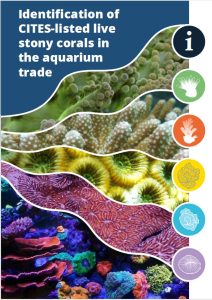
Many new hobbyists have a hard time identifying the stony corals that they see at their local fish stores. Knowing that, I wanted to re-introduce a great reference document sponsored by the United Kingdom government and published November 2022. This guide is titled “Identification of CITES-listed live stony corals in the aquarium trade” and is a free downloadable PDF file. I found it to be an excellent high-level guide to have around since it involved many stakeholders, including the Ornamental Aquatic Trade Association. While this is specific to the UK market on Indonesian-sourced corals, it is still applicable.
Objectives
The project was titled “Developing and implementing practical tools for monitoring and management of trade in CITES-listed coral – ME6058” and the Department for Environmental and Rural Affairs website listed the objectives below.
The overall aim of this project is to develop practical tools for CITES implementing officials to differentiate between maricultured corals and those which have been miss-declared as Source Code F. The objectives of the project will be to:
1.Establish effective UK government to Indonesian government engagement on coral trade through a series of knowledge exchange workshops.
2.Develop an in-depth understanding of current practices and protocols governing mariculture of, and trade in, CITES-listed corals from Indonesia to support the finalization of the UKs NDF.
3.Produce a non-specialist visual identification guide and supporting materials for the differentiation of maricultured and wild-collected coral which will be submitted to CITES.
Takeaway
This document may not dive down to the fine taxonomy details of each coral, but it can introduce the hobbyist to a starting point. I would like to bring back the focus to scientific names and not marketing names. The high level classification allows the hobbyist to quickly identify corals and research the proper care that is needed.
In addition to the identification aspect, it highlights both what the CITES process is and its role in the supply chain. Understanding all aspects of your hobby will drive a greater appreciation of the sustainability efforts being put forth today.
Other References
If you want to get more scientific, here is an interesting reference site from NOAA on Pacific corals:
There are also some awesome purchasable guides by BYOGuides: Coral Finder and Reef Finder are full of images for easy reference.









0 Comments